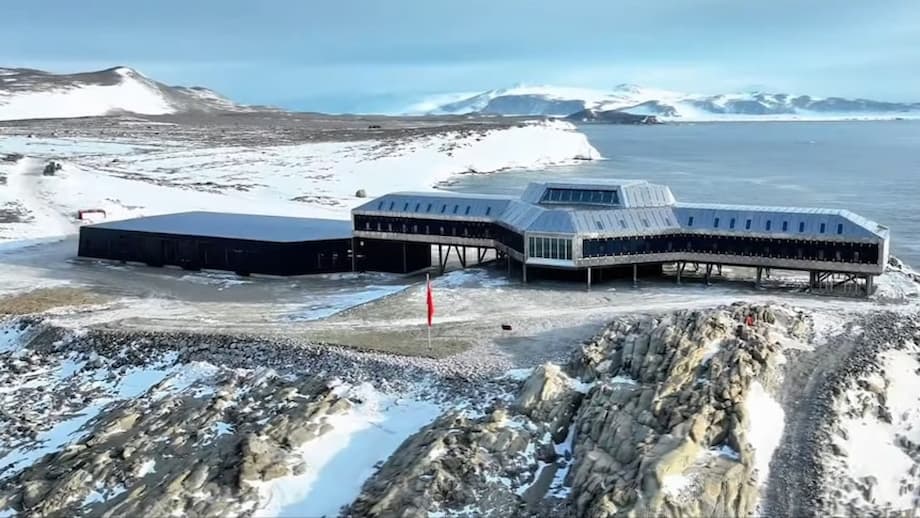Antarctica at a Crossroads: Rising Tensions Over Russian and Chinese Expansion
Antarctica, long regarded as the world’s last great wilderness, is facing a new era of geopolitical competition. Recent moves by Russia and China to expand their presence on the icy continent have sparked alarm among experts, environmentalists, and policymakers. While both nations insist their activities are peaceful and scientific, many observers warn that their ambitions may extend far beyond research, raising questions about the future of the Antarctic Treaty System and the fate of one of Earth’s most fragile environments.
- Antarctica at a Crossroads: Rising Tensions Over Russian and Chinese Expansion
- What Is Driving Russia and China’s Antarctic Expansion?
- The Antarctic Treaty System: Guardian or Paper Tiger?
- Science or Strategy? The Dual-Use Dilemma
- Resource Rush: Oil, Minerals, and Krill
- Geopolitics and the Shrinking U.S. Presence
- Collaboration, Competition, and the Future of the Antarctic Treaty
- Environmental Stakes: Preserving the Last Wilderness
- In Summary
At the heart of the debate are plans by China to build a sixth permanent research station and by Russia to reopen and modernize several of its own, including the construction of new runways for long-haul aircraft. These developments come as the United States, historically the dominant power in Antarctic affairs, faces deep cuts to its polar science budget, potentially leaving a vacuum that other nations may seek to fill.
What Is Driving Russia and China’s Antarctic Expansion?
Officially, both Russia and China frame their Antarctic activities as scientific endeavors, in line with the 1959 Antarctic Treaty, which designates the continent as a nature reserve devoted to peace and science. However, a closer look at recent developments and expert analysis reveals a more complex picture.
China’s new station, planned for Marie Byrd Land, will be its sixth on the continent and is designed to support up to 25 researchers. Chinese authorities insist the facility will focus on climate and marine studies, denying any “geopolitical motive.” Yet, the station’s location—close to U.S., New Zealand, and Russian bases—has raised eyebrows, especially given its advanced satellite monitoring capabilities. Some Western analysts worry that such technology could be used for dual purposes, including military surveillance or communications interception.
Russia, meanwhile, is not only reopening and upgrading its Russkaya station but also building a new airfield and expanding its logistical footprint. Russian research ships have conducted seismic surveys in the Weddell Sea, which some experts believe may be aimed at identifying oil and gas reserves rather than purely scientific research. A recent report claims Russian researchers have discovered an estimated 511 billion barrels of oil beneath Antarctica’s ice—almost double Saudi Arabia’s known reserves—though Russia maintains its activities are in line with the Treaty’s restrictions.
Both countries have also blocked proposals for new marine protected areas, frustrating conservationists and raising suspicions that they are seeking to preserve future access to living and mineral resources.
The Antarctic Treaty System: Guardian or Paper Tiger?
The Antarctic Treaty, signed in 1959 and now with 54 signatories, is one of the world’s most successful international agreements. It prohibits military activity, freezes territorial claims, and bans mineral extraction under the 1991 Madrid Protocol. The Treaty’s core principles are peace, science, and environmental protection.
However, the Treaty faces mounting challenges. It lacks robust enforcement mechanisms, and its ban on mining is up for review in 2048, creating uncertainty about the continent’s long-term future. As Samuel Jardine, a geopolitical consultant, notes, “The discovery of significant oil deposits raises tensions over the Antarctic Treaty System, with Russia and China seeking to shift governance toward economic exploitation.”
Inspections of research stations are allowed under the Treaty, but these are infrequent and often announced in advance. Bill Muntean, a former U.S. representative to the Antarctic Treaty meetings, argues for more rigorous oversight:
“If there are any questions about what is down there for military equipment, personnel or reconnaissance, we need to check it out. Shine the flashlight underneath the bed—is that a teddy bear or is it some scary monster? We’ve got the flashlight. Use it.”
Science or Strategy? The Dual-Use Dilemma
Modern Antarctic research stations are equipped with advanced technologies—infrared telescopes, GPS receivers, satellite uplinks—that can serve both scientific and military purposes. Professor Jeffrey McGee of the University of Tasmania explains,
“What we are talking about here are infrared telescopes, GPS and ground-station receivers that can communicate with satellites. That gives rise to the possibility of that equipment having a dual purpose, in the sense that it can be used for scientific uses, but it can also interface with military and surveillance satellites, upload and download information or be involved in military command control communication systems.”
This dual-use dilemma is at the core of international anxieties. While there is no direct evidence of military activity or commercial mining, the infrastructure being built today could be repurposed in the future, especially if the Treaty’s restrictions are relaxed or ignored.
Resource Rush: Oil, Minerals, and Krill
Antarctica is believed to hold vast untapped reserves of oil, gas, coal, and minerals, as well as some of the world’s richest fishing grounds. The recent Russian claim of a 511-billion-barrel oil discovery in the Weddell Sea has intensified concerns that scientific expeditions may be a cover for resource prospecting.
China, for its part, is rapidly expanding its Antarctic krill fishing industry, deploying super trawlers and resisting new conservation measures. Krill are a key species in the Southern Ocean ecosystem, and overfishing could have cascading effects on whales, seals, and penguins.
While mining and large-scale resource extraction are currently banned, both Russia and China are investing in technologies and infrastructure that could give them a head start if the rules change. As climate change makes the continent more accessible and global demand for resources grows, the temptation to exploit Antarctica’s riches may become irresistible.
The 2048 Question: Will the Ban on Mining Hold?
The Protocol on Environmental Protection to the Antarctic Treaty (Madrid Protocol) prohibits all mineral resource activities except for scientific research. However, this ban is subject to review in 2048, and any signatory can call for renegotiation at any time. Some experts believe China and Russia are positioning themselves to influence or even lead such a renegotiation, potentially opening the door to legal resource extraction.
As one RAND Corporation analysis notes, “China may develop advanced mining technologies in anticipation of a future renegotiation of the Protocol, where it could seek to legalize some mining.” The lack of enforcement mechanisms in the current system means that, in practice, powerful nations could act unilaterally if they believe it serves their interests.
Geopolitics and the Shrinking U.S. Presence
For decades, the United States has maintained the largest and most advanced presence in Antarctica, operating the only station at the geographic South Pole and leading international scientific collaborations. However, recent and proposed budget cuts—amounting to a 70 percent reduction in polar science funding—threaten to undermine America’s influence.
The National Science Foundation’s Office of Polar Programs faces delays in infrastructure upgrades and the decommissioning of its last dedicated Antarctic research ship. Experts warn that a diminished U.S. presence could allow Russia and China to fill the vacuum, shifting the balance of power on the continent.
Other traditional Antarctic powers, such as Australia, the United Kingdom, and New Zealand, are watching developments closely. Australia, which claims 42 percent of the continent, has called for increased vigilance and is reviewing China’s latest station proposal. The UK’s Environmental Audit Committee has urged robust oversight and transparency, especially regarding Russian seismic surveys.
Collaboration, Competition, and the Future of the Antarctic Treaty
Despite rising tensions, there are still areas of cooperation among the major powers. Joint scientific projects, search and rescue operations, and environmental monitoring continue, and the Treaty’s consultative meetings provide a forum for dialogue.
However, the broader trend is toward strategic competition. Russia and China have coordinated their positions to block new marine protected areas and have signed agreements to cooperate on logistics and research. Both are also expanding their icebreaker fleets and developing new technologies for polar operations.
Some analysts see parallels with the Arctic, where Russia and China have deepened their partnership in the face of Western sanctions and military buildup. The Antarctic, while less accessible and less immediately lucrative, is increasingly viewed as a testing ground for global ambitions and a potential flashpoint for future conflict.
Environmental Stakes: Preserving the Last Wilderness
Antarctica is home to unique ecosystems, iconic wildlife, and critical climate records. Its ice sheets hold 90 percent of the world’s fresh water, and its surrounding oceans drive global weather patterns. The continent’s protection is not just a matter of geopolitics but of planetary survival.
Environmentalists warn that increased human activity—whether for science, tourism, or resource extraction—risks irreversible damage. Overfishing, pollution, and the introduction of invasive species are already pressing concerns. The prospect of oil drilling or large-scale mining is anathema to conservationists, who argue that the continent should remain off-limits to commercial exploitation.
At recent Treaty meetings, issues such as emperor penguin protection, plastic pollution, and the regulation of tourism have been discussed, but progress has been slow due to geopolitical divisions. The challenge is to maintain the spirit of international cooperation that has defined Antarctic governance for more than six decades.
In Summary
- Russia and China are rapidly expanding their presence in Antarctica, raising concerns about potential military and resource motives behind their scientific activities.
- The Antarctic Treaty System, which bans military activity and mining, faces challenges from weak enforcement and the prospect of renegotiation in 2048.
- Recent Russian seismic surveys and claims of massive oil reserves have intensified fears of a future resource rush.
- China’s new research station and growing krill fishing industry highlight its long-term strategic and economic interests in the region.
- U.S. budget cuts threaten to reduce American influence, potentially allowing Russia and China to shape the continent’s future rules.
- Environmentalists warn that increased activity could irreparably harm Antarctica’s unique ecosystems and undermine global climate stability.
- The future of Antarctica depends on robust international oversight, renewed commitment to the Treaty’s principles, and a willingness to prioritize peace and science over short-term gain.




